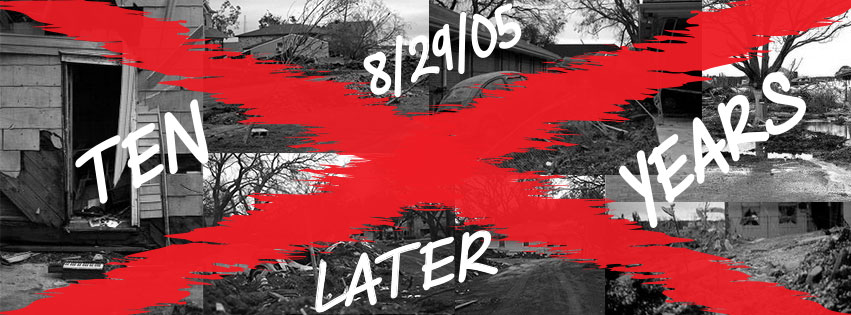Loyola 10 years after Hurricane Katrina
August 20, 2015
Ten years ago on Aug. 28, 2005, Mayor C. Ray Nagin called for a mandatory evacuation of the city of New Orleans, an order that sent the Loyola community packing.
Hurricane Katrina hit New Orleans the following day, Aug. 29. After that day, Loyola was closed for the entire fall semester, and students, along with the rest of the city, were scattered across the country. Catharine Nenninger A’06 remembers the time well.
Her initial plan was to ride out the storm with her brother, who was also attending Loyola at the time, and their mother. Once her mother insisted that the group of them evacuate, her first destination was to Houston, Texas. Normally a six-hour trip, it took 16 hours for Nenninger as she was one of the thousands of people trying to escape New Orleans and Loyola University.
“We tried to enroll at LSU, but it was full, so we headed back to Tampa, our hometown, where we all enrolled at the University of Southern Florida,” Nenninger said. “I remember sobbing in the car ride back to Florida because I felt so guilty leaving.”
Like Nenninger, when the Loyola community realized that the university would not be in session for the fall of that year, they found themselves displaced from their homes and their university. It wasn’t until later that year that many were able to return to the world they had left so abruptly.
“The smell of death was still present in the air and will probably stay with me forever. The lower level of my apartment had completely flooded. Cleaning out my apartment with my mother was probably one of the most emotionally disturbing and physically taxing things I have ever done. I had to throw out so many things that meant so much to me that were completely ruined by the flood waters, such as high school yearbooks, pictures, and journals I had kept since I was a young girl,” Nenninger said.
While Loyola was shut down for the fall 2005 semester, University President the Rev. Kevin Wildes, S.J. travelled to different cities where the Loyola community were stationed in the midst of the storm. One of his visits brought him to Loyola University Chicago, where he addressed students, faculty, staff and alumni who had taken refuge in the area.
In that speech, Wildes spoke to the “resurrection of Loyola.”
“I want to go back and make it better than it was,” Wildes said.
On Aug. 17, 2015, Wildes gave a similar speech at the 2015 Faculty and Staff Convocation, but this time, it was 10 years later.
“New Orleans is a resilient city. It has not returned to what it was before Katrina; it has become better,” Wildes said. “This is what Loyola strives for.”
Resilience is something that Nenninger felt in the aftermath of Hurricane Katrina, saying that Katrina has strengthened her love for the city and her experience at Loyola.
“Katrina taught me so much about the human condition. What stays with me is the people, our community, the resilient nature of New Orleanians. I am so very proud to call this city my home,” Nenninger said.
At the convocation, Rector of the New Orleans Jesuit Community Francis W. “Bill” Huete, S.J. spoke of how we’re always living out of our present viewpoint, and back then it was difficult to envision where Loyola would be in the future.
“But here we are,” Huete said. “Ten years later.”









